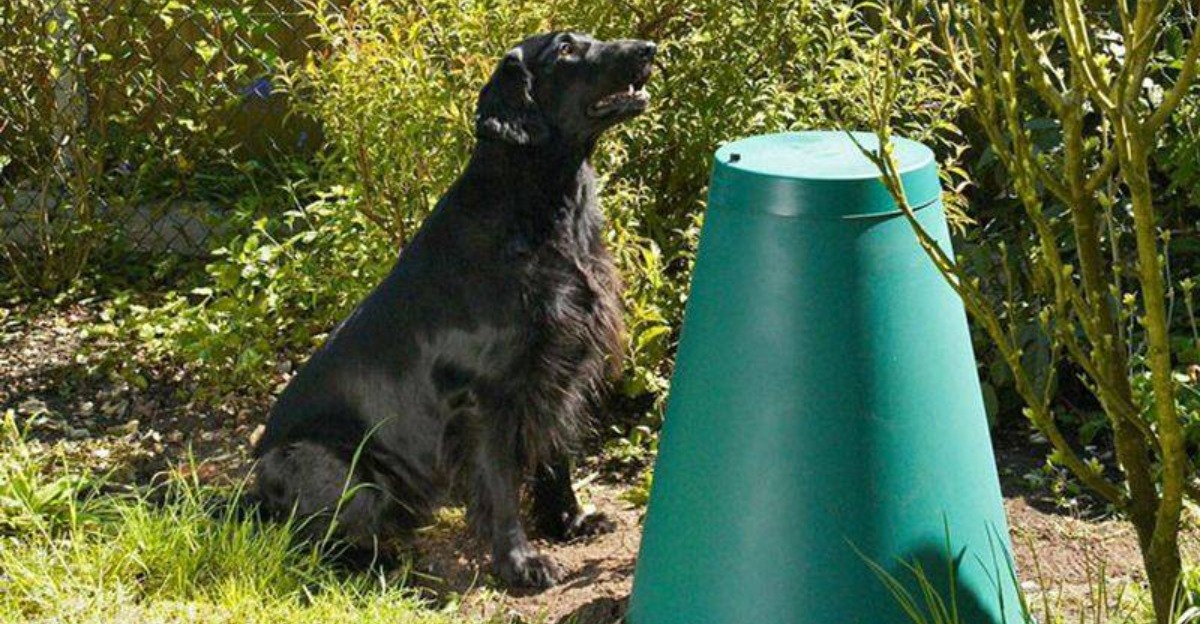
Transitioning from Puppy Food to Adult Food: When and How
Transitioning from puppy to adult food is a crucial stage in a dog’s development that usually occurs between 9 to 12 months. A gradual diet change over 7-10 days helps prevent digestive issues. Choosing age-appropriate, high-quality food and consulting a vet ensures balanced nutrition. Proper timing and feeding methods support your dog’s healthy growth, energy, and overall well-being.
🐶 Pet Star
39 min read · 7, Jun 2025

Introduction
The journey from puppyhood to adulthood is a crucial time in your dog’s life, filled with many milestones. One of the significant changes during this period is transitioning from puppy food to adult food. Puppy food is specially formulated to support rapid growth and development, while adult dog food focuses on maintenance and long-term health. Making the switch at the right time, and in the right way, ensures your dog continues to receive balanced nutrition without upsetting their digestive system.
This article will guide you through the signs to watch for, the best timing for transition, how to do it gradually, and tips to help your dog adjust smoothly to adult food. Transitioning a Labrador puppy from specialized puppy food to adult dog food is a critical nutritional milestone that profoundly impacts their long-term health, development, and well-being. It's a process that requires careful consideration, precise timing, and a gradual approach to avoid digestive upset and ensure the growing dog continues to receive the balanced nutrition essential for their specific life stage. Unlike human children who might transition from infant formula to solid foods in a relatively short period, a dog's growth, especially that of a large breed like a Labrador, spans a much longer and more complex developmental phase, necessitating a prolonged period on puppy-specific formulations. Puppy foods are scientifically formulated to meet the intense caloric, protein, fat, and micronutrient demands of rapid growth, bone development, and organ maturation. They typically contain higher levels of protein and fat for energy, increased calcium and phosphorus for bone health, and often added DHA for brain and eye development. However, maintaining a growing Labrador on puppy food for too long can be detrimental, potentially leading to excessive weight gain, accelerated growth that strains developing joints, and an imbalance of certain nutrients. Conversely, transitioning too early can deprive them of the crucial building blocks needed during their formative months. Therefore, understanding the precise timing and implementing a meticulous, gradual transition strategy are paramount to safeguarding a Labrador's skeletal, muscular, and overall health as they mature from a rambunctious puppy into a robust adult. The "when" of transitioning a Labrador from puppy to adult food is primarily dictated by their breed size and anticipated adult weight, as well as their individual growth rate and maturity. For large breeds like Labradors, the transition typically occurs later than for small or medium breeds, usually between 12 to 18 months of age. This extended puppy food phase is crucial because large breeds grow at a rapid rate but take longer to reach skeletal maturity. Feeding a large breed puppy food for the appropriate duration helps support controlled growth, preventing the rapid, unnatural growth spurts that can exacerbate developmental orthopedic diseases such as hip and elbow dysplasia, conditions to which Labradors are genetically predisposed. Some veterinarians may even recommend continuing large-breed puppy food until 24 months for particularly slow-maturing or giant breeds, but for most Labradors, the 12-18 month window is standard. It's important to consult with your veterinarian, who can assess your individual Labrador's growth curve, body condition score, and overall health to provide a personalized recommendation for the optimal transition timing. Factors like spaying or neutering can also influence metabolism and weight gain, potentially prompting a slightly earlier consideration of adult food, though the primary driver remains skeletal maturity. Signs that your Labrador might be ready for adult food include a leveling off of their growth rate, a more adult-like body shape rather than a gangly puppy appearance, and reaching approximately 80-90% of their anticipated adult height.
The "how" of transitioning is equally, if not more, important than the "when." A sudden switch from puppy food to adult food can lead to significant digestive upset, including diarrhea, vomiting, and loss of appetite. A Labrador's digestive system, accustomed to the specific nutrient profile and composition of puppy food, needs time to adjust to the different ingredients, fat content, protein levels, and fiber content of adult formulations. Therefore, a gradual, slow transition over a period of 7 to 10 days is highly recommended to minimize gastrointestinal distress. The process involves progressively increasing the proportion of the new adult food while simultaneously decreasing the proportion of the old puppy food at each meal.
A typical 7-day transition schedule might look like this:
- Days 1-2: Mix 75% puppy food with 25% adult food. This small introduction allows the digestive system to begin adapting to the new ingredients.
- Days 3-4: Adjust the ratio to 50% puppy food and 50% adult food. At this point, the new food constitutes a significant portion of their diet.
- Days 5-6: Shift to 25% puppy food and 75% adult food. By now, the adult food makes up the majority of their meals.
- Day 7: Transition to 100% adult food.
For Labradors with particularly sensitive stomachs, extending this transition period to 10 or even 14 days by making smaller, more gradual increases can be beneficial. For example, some owners might start with 10% new food for a few days, then 20%, and so on. Throughout the transition, closely monitor your Labrador for any signs of digestive upset such as loose stools, diarrhea, vomiting, decreased appetite, or lethargy. If any of these symptoms appear, slow down the transition immediately. You might need to revert to the previous ratio for a few extra days or even consult your veterinarian if symptoms persist.
Choosing the right adult dog food for your Labrador is another critical component of a successful transition. Given their predisposition to joint issues and their tendency towards weight gain, selecting a high-quality adult dog food specifically formulated for large breeds is highly recommended. These formulations often contain glucosamine and chondroitin for joint support and are typically lower in calories compared to standard adult dog foods to help manage weight. Look for foods with real meat as the primary ingredient (e.g., chicken, beef, lamb, fish), and avoid those with excessive fillers, artificial colors, flavors, or by-products. The balance of protein, fat, and carbohydrates should be appropriate for an active adult Labrador. Reading ingredient labels carefully and consulting with your veterinarian about reputable brands and formulations that meet your Labrador's specific nutritional needs is always the best approach. Some owners also consider grain-free or limited-ingredient diets if their Labrador shows signs of food sensitivities, but these decisions should ideally be made in consultation with a vet or veterinary nutritionist.
Beyond the food itself, maintaining consistent feeding habits is crucial during and after the transition. Continue to feed your Labrador the same number of meals per day as you did with puppy food (typically two meals a day for adults). Stick to regular feeding times to maintain a predictable routine, which aids digestion and helps prevent anxiety. Monitor your Labrador's body condition score closely. As their metabolism shifts from rapid growth to maintenance, their caloric needs per pound of body weight will decrease. It's common for Labradors to gain weight easily if their food intake isn't adjusted post-transition. Observe their waistline and feel their ribs; you should be able to feel their ribs easily without seeing them prominently, and they should have a discernible waist when viewed from above. Adjust portion sizes as needed to maintain a healthy weight. Regular exercise appropriate for an adult Labrador's energy level is also paramount in conjunction with their new diet to prevent obesity, which is a major health concern for the breed.
Furthermore, consider the texture and palatability of the new food. Some Labradors might be finicky. If your dog resists the new food, try mixing it thoroughly with the old food, or even moistening it slightly with warm water to release aromas and soften the kibble. Do not give in to begging for human food, as this can undermine the transition and create pickiness. If resistance continues, explore different flavors or brands of high-quality large-breed adult food, again, preferably with veterinary guidance. Patience is key; a consistent approach will eventually lead to acceptance.
In conclusion, the transition from puppy food to adult food for a Labrador is a critical, multi-faceted process that demands careful consideration of both "when" and "how." Timing, generally between 12 to 18 months, is crucial for supporting their prolonged skeletal development as a large breed. The "how" involves a meticulous, gradual introduction over 7-10 days, slowly integrating the new adult food to prevent digestive upset. Selecting a high-quality large-breed adult formula tailored to their lower caloric needs and joint health, coupled with consistent feeding routines and vigilant monitoring of body condition, are all vital steps. This thoughtful and deliberate approach ensures that your growing Labrador receives optimal nutrition during a pivotal developmental stage, fostering not just physical health but also contributing to their overall well-being and longevity as a cherished adult companion.
Why Is the Transition Important?
Puppies have different nutritional needs than adult dogs. Their food contains higher protein, fat, and calorie content to support their active growth phase. Once a dog reaches adulthood, their metabolism slows down, and their nutritional needs shift toward maintaining a healthy weight and supporting overall wellness.
Feeding adult food too early can stunt growth, while continuing puppy food for too long can cause obesity and digestive issues. Therefore, a proper transition ensures your dog gets the right nutrients at each stage of life.
When Should You Transition to Adult Dog Food?
The ideal time to switch varies by breed, size, and individual development:
- Small breed dogs (under 20 lbs): Generally reach adulthood faster, often around 9 to 12 months.
- Medium breed dogs (20-50 lbs): Transition usually happens between 12 to 15 months.
- Large and giant breed dogs (over 50 lbs): Take longer to mature; transition may begin between 12 to 24 months.
Key indicators your puppy is ready:
- Puppy has reached approximately 80% of their expected adult size.
- Growth rate has slowed noticeably.
- Your veterinarian confirms maturity and nutritional needs.
How to Transition Gradually: Step-by-Step Guide
Switching food abruptly can cause stomach upset, diarrhea, or refusal to eat. To avoid this, follow a gradual transition over 7-10 days:
Day 1-3:
Mix 25% adult food with 75% puppy food.
Day 4-6:
Mix 50% adult food with 50% puppy food.
Day 7-9:
Mix 75% adult food with 25% puppy food.
Day 10 onwards:
Feed 100% adult food.
Monitor your dog’s appetite, stool quality, and overall behavior during this period. If digestive upset occurs, slow down the transition.
Tips to Make the Transition Smooth
- Choose a high-quality adult dog food that meets AAFCO nutritional standards.
- Maintain consistent feeding times to create a routine.
- Avoid adding extra treats or table scraps during transition to prevent digestive confusion.
- Ensure fresh water is always available.
- Consult your veterinarian if your dog has special health conditions or sensitivities.
Signs Your Dog Is Struggling with the Transition
If your dog shows any of the following symptoms, it may indicate difficulty adjusting:
- Vomiting or diarrhea lasting more than two days.
- Loss of appetite or refusal to eat new food.
- Lethargy or unusual behavior.
- Allergic reactions such as itching, rashes, or excessive scratching.
In such cases, revert to the previous diet and consult your vet for advice.
What to Expect After the Transition
Once fully switched, your dog’s digestion should stabilize, and they should maintain a healthy weight and energy level. Adult dog food formulas often include nutrients that support joint health, dental care, and a healthy coat, contributing to your dog’s long-term wellness.
Special Considerations for Large and Giant Breeds
Large breeds grow more slowly and require diets formulated to support healthy bone and joint development without excessive calories. Look for adult foods designed specifically for large breeds, and consider extending the transition period to avoid overfeeding.
Conclusion
Transitioning from puppy food to adult food is a critical step in your dog’s growth journey. Knowing when to make the switch and how to do it gradually helps prevent digestive upset and ensures your dog receives the nutrition they need at every stage. Always observe your dog closely during the transition, and don’t hesitate to consult your veterinarian for personalized guidance.
By approaching this transition thoughtfully, you support your dog’s health and happiness as they grow in to a vibrant adult companion.
Q&A Section
Q1: When should I start transitioning my puppy from puppy food to adult dog food?
Ans: Most puppies should transition to adult dog food between 9 to 12 months of age, depending on their breed size. Small breeds may switch closer to 9 months, while larger breeds may need up to 12-18 months.
Q2: Why is it important to switch from puppy food to adult food at the right time?
Ans: Puppy food is formulated for growth and higher calorie needs. Switching too early or late can lead to nutritional imbalances, affecting your dog’s health and weight.
Q3: How do I choose the right adult dog food for my pet?
Ans: Look for high-quality adult dog food that matches your dog’s breed size, activity level, and health needs. Consult your vet for personalized recommendations.
Q4: What is the best way to transition my puppy’s diet?
Ans: Gradually mix increasing amounts of adult food with decreasing amounts of puppy food over 7 to 10 days to avoid digestive upset.
Q5: Can I feed puppy and adult food simultaneously during the transition?
Ans: Yes, during the transition phase, a mix of both foods is recommended to allow your puppy’s digestive system to adjust smoothly.
Q6: What signs indicate my puppy has successfully transitioned to adult food?
Ans: Stable digestion, regular stools, healthy coat, consistent energy levels, and maintaining a healthy weight are good indicators.
Q7: Are there any risks of switching to adult food too early?
Ans: Yes, switching too early may result in inadequate nutrient intake, affecting growth, bone development, and overall health.
Q8: How often should I feed my dog after switching to adult food?
Ans: Typically, adult dogs are fed twice daily, but feeding frequency can depend on breed, age, and activity level.
Q9: Should treats and supplements change when switching to adult food?
Ans: Treats should be age-appropriate and healthy. Supplements should be given only if recommended by your vet.
Q10: What role does regular vet check-up play during this transition?
Ans: Regular vet visits help monitor your dog’s growth, adjust diet plans if needed, and catch any health issues early.
Similar Articles
Find more relatable content in similar Articles

Virtual Vet Visits: Are Online Consultations Reliable?..
As pet healthcare embraces dig.. Read More

Pets and Mental Health: The Science Behind Emotional H..
Discover the profound impact o.. Read More

Social Media for Pets: Turning Your Pet into a Digital..
From playful puppies to charis.. Read More

Composting Pet Waste: A Greener Way to Clean Up...
As pet ownership continues to .. Read More
Explore Other Categories
© 2024 Copyrights by rPets. All Rights Reserved.